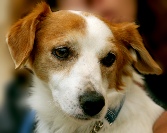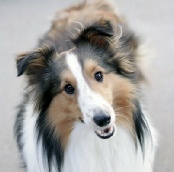
Copyright © 2013 CanineCancer.org.au All rights reserved.
Common Cancers
There are many different types of cancer that can affect our dogs. These cancers can affect various areas of the body. The most common cancers are outlined on this page. On our Types of Cancer page it highlights just how many types of cancer can affect each area of the body.
Haemangiosarcoma is also known as malignant haemangioendothelioma or angiosarcoma. It originates in the endothelium cells, which are the cells that line the interior surface of the blood vessels. It then invades the blood vessels. See more on haemangiosarcoma
Histiocytic sarcoma is a very aggressive tumour that can quickly become invasive to surrounding tissue. It has a high rate of spreading to other areas of the body. Localised histiocytic sarcoma, is often found in areas such as the skin and joints of the limbs. See more on histiocytic sarcoma
Mast Cells are normally found throughout the body. They release active chemicals, such as histamine, heparin, serotonin, prostaglandins, and proteolytic enzymes. These chemicals are vital to body function, especially to help the immune system, but when the cells turn cancerous they can be produced to excess which can be extremely damaging. See more on mast cell tumours.
Melanomas originate in the cells called melanocytes which produce a pigment called melanin. A malignant tumour is known as a malignant melanoma or melanosarcoma. A benign tumour is known as melanocytoma. They are most commonly found on the skin, the mouth and the toe nail bed. Melanomas found on the skin are generally benign. See more on melanoma.
Lymphoma is a cancer that can affect any breed of dog, but there are certain breeds that have a high predisposition to this disease. Border Collies, Boxers, Bullmastiffs, Cocker Spaniel, Golden Retriever and there are more. See more on lymphoma
Osteosarcoma is the most common bone tumour of dogs. It originates in the cells that make the bone. It accounts for around 85% of tumours in the canine skeleton. It is most common in the front legs, especially in the area above the foot, but can also occur in the hind legs. It is most active at either end of a bone rather than the middle. See more on osteosarcoma
These are a group of tumours that all form from connective tissue. They therefore can have lots of names but the most common is fibrosarcoma. Benign tumours are uncommon and end in –oma rather than –sarcoma (e.g. fibroma, not fibrosarcoma). See more on soft tissue sarcoma.
Cutaneous Squamous Cell Carcinoma, is a malignant tumour of the epidermal cells in the skin. Ninety five percent of the cells in the epidermis are made up of keratinocytes. These tumours normally grow slowly but are aggressive in nature. See more on squamous cell carcinoma








Anal Sac Adenocarcinoma
Tumours of the anal sacs are uncommon in dogs and very rare in cats. Anal sac adenocarcinoma (ASAC) arise from apocrine sweat glands which drain into the anal sacs. They occur at a relatively low frequency in the dog, representing 17% of all perianal tumours. See more on anal sac adenocarcinoma

